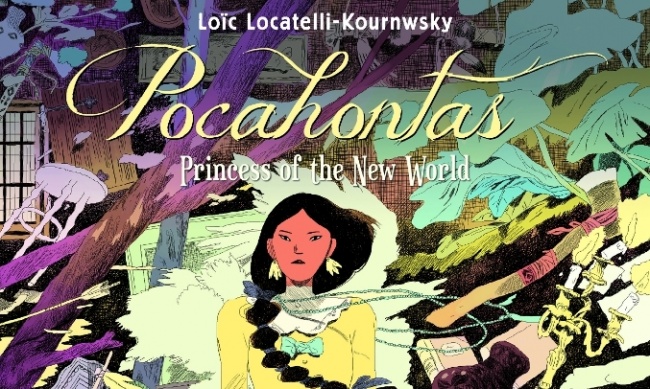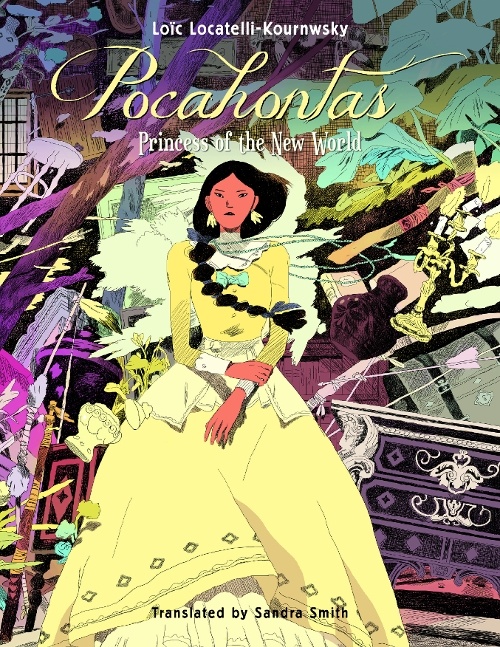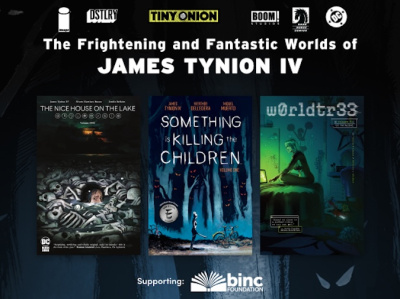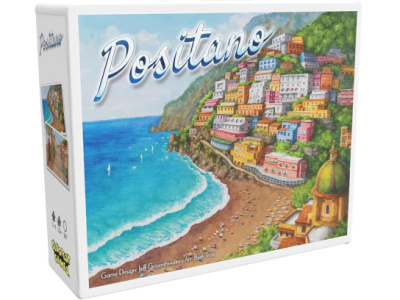Pocahontas: Princess of the New World HC
Publisher: Pegasus Books
Release Date: September 6, 2016
Price: $25.95
Creator: Loïc Locatelli-Kournwsky (translated by Sandra Smith)
Format: 128 pgs., Full-Color, Hardcover
ISBN: 978-1-6817-7217-2
Age Rating: All Ages
ICv2 Rating: 1 Stars out of 5
In the American, national meta-narrative of Indigenous conquest and dispossession, the figure of Pocahontas stands dominant as generations of writers and artists have abused and mischaracterized her to reshape the story into one of discovery, harmony, and romanticism. By far the most popular caricatures of this historical figure are the 1995 Disney animated film and the 2005 live-action movie; yet, at least Natives were involved in these cinematic representations. While Locatelli-Kournwsky's Pocahontas: Princess of the New World is absent the talking animals found in the Disney fare, it joins the legions of ahistorical stories and falsehoods surrounding Pocahontas's life.
One of the major difficulties in dealing with a figure such as Pocahontas is source material. The majority of information about her life stems from two individuals--John Smith and John Rolfe. Smith's notoriously fabricated, continuously revised and updated journals have been criticized by historians for decades. Although Rolfe, Pocahontas's husband, would have greater information about their personal life, he would know little of her prior to their historical marriage in 1614, seven years after the English landed at Jamestown. Apart from some scattered mentions by other English colonists, only oral tradition and the cultural practices of the Powhatan and neighboring Indian nations survive and give readers a glimpse as to who Pocahontas may have been. As such, Locatelli-Kournwsky's lapsed research and awareness of the competing narratives about Pocahontas have resulted in yet another romanticized, recycled tale that belongs alongside the fabricated myths of old.
At first, however, it appears that this may not be the case with Pocahontas: Princess of the New World. While the cringeworthy title evokes the Eurocentric notions of Pocahontas as yet another "princess," a category only sadly reinforced by Disney, Locatelli-Kournwsky provides readers a short-lived hope in not only introducing Pocahontas by one of her Algonquin names, Mataoka, but also as the young girl of 10-13 years of age. Additionally, Locatelli-Kournwsky's style and use of color is quite inventive and original, giving Pocahontas and the Natives a distinctive design. Despite Locatelli-Kournwsky's over-reliance on a six panel page grid, Pocahontas illustrates a solid comprehension of visual storytelling and sequential geography.
Yet, this is where Locatelli-Kournwsky abandons historical fact in favor of myth, regurgitating the questionable "saving" of John Smith by Pocahontas due to her "love" of this strange man. Add to that a sequence of Smith saving her and the two sharing moments of solitude and peace together. The most egregious and offensive insult, however, is Locatelli-Kournwsky's claim that "Pocahontas" translates into "shameless whore" and is used by her people to chastise her for "saving" Smith's life.
While the rest of the narrative is full of historical inaccuracies and continued falsehoods, including the absence of Pocahontas's son with Rolfe and subsequent death by smallpox, the story itself is troubled by lettering errors and missing words. And, although Locatelli-Kournwsky attempts to make up for his mistakes with an epilogue commentary on the New World, it cannot save this meandering story. Even for a fictional biography, Pocahontas: Princess of the New World does a great disservice to this significant, historical figure.
--Nathan Wilson

ICv2 Stars: 1 (out of 5)
Posted by Nathan Wilson on September 20, 2016 @ 4:56 am CT
MORE COMICS
From Tiny Onion, Dynamite, Image, IDW
July 18, 2025
There are four Humble Bundle deals running right now, from Tiny Onion, Dynamite, Image, and IDW.
From Marvel Comics
July 18, 2025
Age of Revelation, a new status quo taking place 10 years into the future and arising out of current developments in the X-Men titles, begins in October.
MORE REVIEWS
ICv2 Stars: 4 (out of 5)
July 11, 2025
Here's a review of Positano, published by Slugfest Games.
ICv2 Stars: 3.5 (out of 5)
June 20, 2025
Check out the review of Disney Lorcana TCG: Illumineer's Quest - Palace Heist, from Ravensburger.








